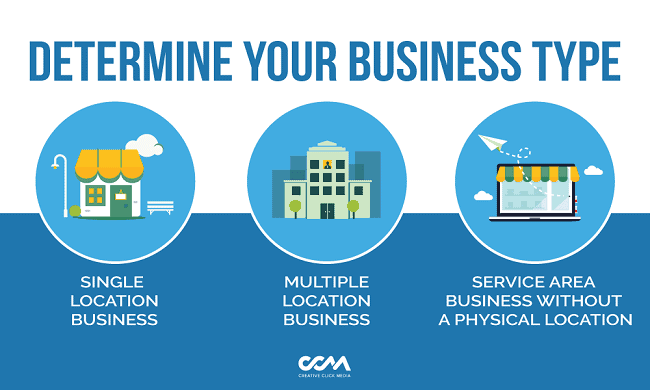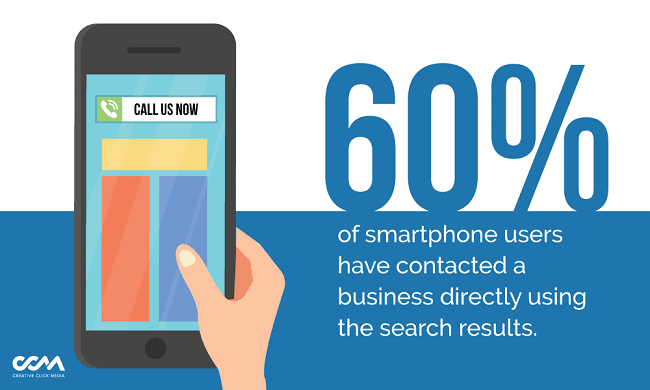SEO is all about getting your business in front of your target audience and making it easy for them to find you. Essentially, it’s about showing up on the first page of a Google search. 46% of searches on Google have local intent. People conducting a local search usually intend on visiting the business they choose, so local SEO is important. Whether you are a single or multiple location business, location pages can help boost your local SEO and make it easier for your audience to find you. Before we jump right into how to create an effective location page, let’s explain what it is.
The location page is a landing page that contains all your vital business information with an emphasis on your location or service area. In addition to making it easier for your audience to find you, a location page also allows search engines to understand where you do business and the services or products you provide. When armed with that knowledge, search engines like Google are more likely to display your business when someone conducts a “near me” search for what your business offers.
Does Your Business Need a Landing Page?
The answer is yes.
If you want your business to show up in local searches for your location or service area, you need a location page.
Location pages are a geographically-specific component of a local SEO strategy. They are especially important for SEO if you have multiple locations. Businesses with multiple physical locations or service areas should have a landing page for each to help boost their local SEO efforts.
Now that we established how important location pages are, it’s time to start creating them. If your first thought is “How?”, relax. We’ve put together the ultimate landing page checklist to walk you through the process.
✓ Start with NAP
No, while it may sound tempting, this Is not an afternoon siesta. NAP is the acronym for name, address, and phone number. These are the first pieces of information your location page should include. As the user’s proximity to your business is one of the top three factors for showing up in Google’s local 3-pack, it’s crucial that this information is identical across all platforms. This includes your website, Google My Profile (GMP, previously Google My Business – GMB) listing, and all other online directories as well as your location page.
✓ Determine Your Business Type
Beyond NAP, the type of business you have will dictate how to handle location pages.
Single location business – If your business only has one location, you will only need one location page this page should feature your NAP information. We will cover the other information location pages should include as we work our way through the checklist.
Multiple location business – A business that has multiple locations will need multiple location pages. Each page should include the NAP information specific to that location. Yes, we know. We previously said the NAP information should be identical across all platforms and that is true. It is a little more involved with a multiple location business.
You can begin to separate the NAP information for each location and ensure its consistency in your GMP profile. Google’s bulk location management tool allows you to include up to 10 separate location listings. You must first create a business account (sometimes referred to as a location group). Then you will need to create a spreadsheet with all of your locations and the NAP information specific to each. That spreadsheet is uploaded into your business account. The next step is bulk verification. This requires submitting a form with information about you and your business. Your locations will not appear in Search, Maps, and other Google properties until verification is complete.
Service area business (SAB) with a physical location – Google defines a service area business as A business that visits or delivers to customers directly but doesn’t serve customers at their business address.” For a SAB with a physical office, you will include your business name, service area, and phone number on your location page. With multiple service areas, creating a location page for each service area is beneficial. You should only make your physical address visible if your office is staffed during business hours. Be sure to include your business name and phone number as crawlable text.
Service area business without a physical location – If your SAB doesn’t have a physical office or is in your home, your location pages should include your business name, service areas, and phone number. You will need to use the registered address of your business on your GMP listing and hide it from users. Unfortunately, for SABs with multiple locations, the bulk verification feature can’t be used. These are listed as additional information within the same GMP listing.
 ✓ Include Location-Based Keywords
✓ Include Location-Based Keywords
Your location pages, just like the other pages on your website, need to include the proper keyword or phrase. A unique, location-specific keyword should be used in the title, H1 heading, meta description, and URL of each page. This will allow Google and other search engines to clearly identify your location or service area.
SABs with a physical office should use the city where it is located as their keyword or part of their key phrase and highlight their service areas on their location page. Or they can create an individual page for each service location using the location as the keyword. Those without a physical office should include service area-specific keywords for each location page.
✓ Create Unique Location-Based Content
Whether you have a single location page or multiple location pages, the keyword chosen for each should be used throughout the page content. We aren’t suggesting that you keyword stuff your location pages, but include the keyword naturally wherever possible. It can also be beneficial to mention nearby landmarks. However, you want to use landmarks that may be relevant to your targeted audience.
For example, we recently worked with a biomedical equipment company. They wanted to expand beyond their current service areas to include the continental United States. We created location pages for all 48 states, with most of them mentioning one or more of the prominent medical facilities in that state. This made their location pages more effective and have them showing up on page one for locations across the country.
To get a better idea of how to incorporate this information, check out one of their location pages They can’t be included in the local 3-pack as they are a service area business and don’t have a physical location. However, they are the very first listing after the local 3 pack.
Don’t forget to include your unique selling proposition (USP) on your landing pages. While you want to promote your products or services on your location pages, you also need to explain what makes your business different; what sets you apart from your competitors.
If you have more than one location page, it is important that the content on each page is unique. While it is a myth that Google penalizes websites for duplicate content, it can result in less than stellar search results and poor user experience. Following Google’s guidelines for duplicate content can help you avoid such issues.
Businesses with a physical location should include location-based keywords, product and service offerings, their USP, and any nearby landmarks that may be of interest to their target audience. SABs should include the appropriate service area related keywords, USP, and products or services on each location page.
✓ Don’t Forget Your Business Hours
Not only do you need to include your business hours on your location pages, but you also need to keep them updated. Nothing will end a potential customer relationship faster than having them arrive to find your doors locked when your location page said you would be open.
Multiple location businesses should list the hours of each location on its respective location page. SABs should include the office hours, if available, and all service hours.
For example, let’s say you have a plumbing business. Your office hours are 9-5, Monday through Friday but you offer 24/7 emergency service. All of this information should be included on your location pages. A SAB without a physical location should include the hours when services are available. Business hours can also be posted and updated in your GMP listing.
✓ Add Images to Your Location Page
All your other website pages have images (or at least they should). So why wouldn’t you add a few to your location page?
For businesses with a physical location, you should add both exterior and interior images. Exterior images can be extremely helpful to someone visiting your business for the first time. As they near your location, they will recognize your storefront and be assured they are at the right place. Interior photos will give users a sneak peek at what they can expect when visiting your business. If yours is a retail business whose merchandise changes seasonally, you may want to update your interior images throughout the year.
With SABs, you can include an exterior image of your office if it is open to the public. Otherwise, you will want to use more service-related images. Maybe a picture of one of your service vehicles emblazoned with your company name and logo or a group shot of your team.
Just like the images on your other website pages, the images on a location page need to be optimized for SEO, with a title (or name) and the appropriate alt tag. Replace the image file name with a title that explains the image and includes your keyword. The alt tags should explain what the image depicts and also includes a related keyword.
✓ Include a Few Rave Reviews
Location pages are a great place to include reviews. Once a user has landed on your location page, they should be able to find out everything they want to know about your business. That includes what others are saying about your business. Online reviews are today’s version of word-of-mouth advertising, so make sure they are included on your location pages.
It is also a good idea to include links to your social media pages. The comments and reviews there provide social proof of the quality products or services your business offers. This will also help you build authority with your audience.
✓ Use Schema Markup
When search engines crawl your location page (or any of your website pages), you want them to understand your content so they can provide the best possible search results for your business.
Schema Markup is the result of a collaboration between Google, Bing, Yandex, and Yahoo. It is a shared semantic vocabulary of tags that, when added to your HTML, makes it easier for search engines to read and understand your content. Adding Schema Markup to your location page can help boost your local SEO and advance your efforts to show up on page one of a search. In other words, it makes it easier for your customers to find you.
✓ Provide Maps and Directions
Your location page should put everything users need to get to you at their fingertips. For businesses with a physical location, once an individual has decided they want to do business with you, they need directions. Why make them navigate away from your website to get them? You can embed a Google Map and Google Directions right into your location page, allowing customers to find you with the push of a button.
✓ Be Mobile Friendly
Since 2017, mobile devices have generated about half of the website traffic globally. This fact alone should tell you how important it is that not only your location pages but your whole website should be mobile-friendly. In statistics compiled by Hubspot, 60% of smartphone users have contacted a business directly using the search results. We can guarantee those individuals weren’t flipping through screens to dial a phone number. They just hit the “click to call” button. While this feature is beneficial for businesses with or without a physical location, it can be particularly valuable for those without a physical location.
There are different methods for adding this button, depending on which content management system (CMS) you use. WordPress, one of the most commonly used CMS, provides a couple of methods to add a “click to call” button. If you’re using a different CMS, there should be a plug-in or online direction on how to add this button to your location page.
 Location Page Overload
Location Page Overload
Does creating location pages seem a bit overwhelming?
We get it. Some things are better left to the experts.
From simple maintenance like creating location pages to a complete website redesign, fully optimized for SEO, Creative Click Media can handle it all. Maybe you need content or social media marketing. We can handle that too. Whatever your digital marketing needs are, we can customize a plan that is specifically tailored to your business. Contact us to get started.


 ✓ Include Location-Based Keywords
✓ Include Location-Based Keywords Location Page Overload
Location Page Overload

